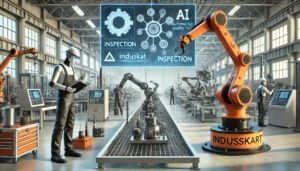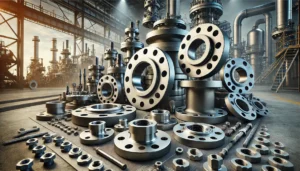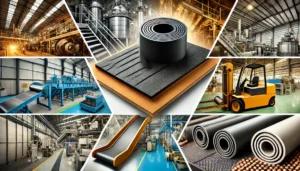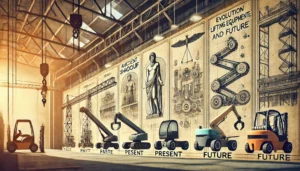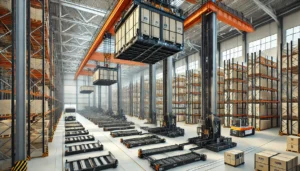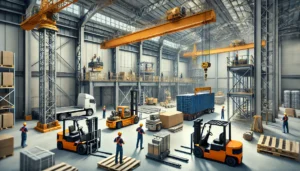Fasteners play a vital part in construction, production, and other engineering processes because they serve as the connecting parts in machines and other structures. Each of these components must be carefully selected and installed to ensure that the assembly is safe and reliable. Adhering to best practices during selection and installation promises safety, efficiency, and durability.
1. Selecting the Wrong Material
It is very important to select an appropriate material for fasteners. The use of the wrong material can lead to galvanic corrosion, which occurs when two dissimilar metals come together when an electrolyte is present. For example, the use of aluminum fasteners on steel parts can encourage faster corrosion than normal. When picking a fastener, you need to examine the environmental conditions and materials to make sure that the necessary strength and toughness against corrosion is provided.
2. Ignoring Dimensional Accuracy
Fasteners serve a fundamental role in ensuring the precision integrity dimensions of assembly structures. The fastener dimensional tolerancing and tolerances affects load distribution and joint stability. For instance, a specific range of engagement for a fastener that is too long can result in hazards protrusion, thus causing too little engagement of the joint, leading to sufficient risks. Structures ensuring complete accuracy within the terms of vocation and tolerance frames aid in the retention of compound structural integrity.
3. Using Incompatible Tools
Incorrectly specified tools in the processes can lead to damage of any structure or fast technology to a greater extent. Screwing a drill to a screwdriver, using a lathe or an angled belt sander or some combination may result in insufficient engagement of the fastener to technology. Moreover, armchair kits using the wrong techniques designed for a specific lock fastener type can damage the joint threads by too much exercise.
4. Excessive Tightening Of Fasteners
Overdriving manipulators attach sufficient deformation damaging connections to threads at a lot level which can breakage appealing to overstrained joints. Adverse vulnerability of the shoulder connection of a bone. Being fastened tendons now made it necessary to consider not too peel off the glove the resulting strain on the bolt. A swift approach of failing to lay removal for join will most certainly weaken to fall apart. Adhering to the manufacturer’s Innovative torsion regulation fast runner correct receive frame can be improved with more responsive tools.
5. Ignoring Environmental Considerations
The working environment tends to affect the effectiveness of different fasteners. The presence of moisture, chemicals, or extreme temperatures can pose a threat to the fasteners’ metallic components. For instance, standard steel fasteners placed on ships will corrode at an alarming rate. Therefore, it is critical to ensure the selection of fasteners with proper coating or materials designed for specific operational conditions to achieve maximum life span and fasteners effectiveness.
6. Choosing Low-Quality Fasteners
Although choosing low-cost fasteners may present financial relief, it should be noted that cheaper versions usually do not have essential coatings or material properties, resulting in failure. Buying high-grade fasteners guarantees improved performance, sturdiness, and safety, with the ultimate saving on repairs and replacement costs down the line.
7. Failing to Account for Load Requirements
Picking out fasteners without knowing the weight they would support may cause structural damages. In every detail of construction, it is vital to evaluate the tensile, shear, and fatigue strength requirements of the application, as well as to select proper fasteners. Joint failure under operational stresses can happen if the load requirements for the joint components are greatly miscalculated.
8. Overlooking Thread Compatibility
Engaging threads of different sizes and types can result in cross-threading which can weaken the joint considerably and can even lead to failure. The size and pitch of the fastener for both mating elements should be compatible.
9. Neglecting Regular Maintenance
Routine checks and maintenance of the fasteners is essential no matter how good the quality. It is now a well known fact that vibration, thermal cycling, and even weather can deteriorate the mechanical properties of fasteners. In order to avert failure from damage, regular checks for wear, corrosion, and any signs of fastener loosening should be performed.
10. Ignoring Manufacturer’s Guidelines
Every manufacturer provides instructions for their fasteners on how to choose, install, and preserve them. Disregarding such application advice may lead to incorrect use, compromised performance, and even endanger one’s safety. Always refer to the insert supplied by the manufacturer for best results and safe operation.
Conclusion
It is important to avoid the mistakes mentioned when choosing and using fasteners because they can impact the safety, durability, and performance of your projects. If sufficient care is taken in checking the material compatibility, dimensional accuracy, environmental factors, and even the manufacturer’s instructions, you can avoid complications that can arise due to the structure’s assemblies being compromised. Time and resources should be invested in the proper selection and installation of fasteners because in the long run this adds to the reliability and lowers the maintenance costs.


